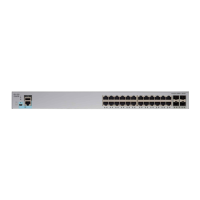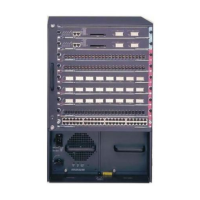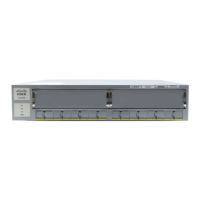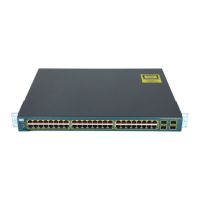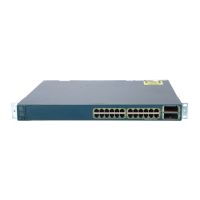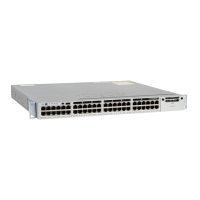6-45
Catalyst 2900 Series XL and Catalyst 3500 Series XL Software Configuration Guide
78-6511-05
Chapter 6 Configuring the System
Managing the ARP Table
Root guard enabled on a port applies to all the VLANs that the port belongs to.
Each VLAN has its own instance of STP.
Beginning in privileged EXEC mode, follow these steps to set root guard on a
port:
Use the no version of the spanning-tree rootguard command to disable the root
guard feature.
Managing the ARP Table
To communicate with a device (over Ethernet, for example), the software first
must determine the 48-bit MAC or the local data link address of that device. The
process of determining the local data link address from an IP address is called
address resolution.
The Address Resolution Protocol (ARP) associates a host IP address with the
corresponding media or MAC addresses and the VLAN ID. Taking an IP address
as input, ARP determines the associated MAC address. Once a MAC address is
determined, the IP-MAC address association is stored in an ARP cache for rapid
retrieval. Then the IP datagram is encapsulated in a link-layer frame and sent over
the network. Encapsulation of IP datagrams and ARP requests and replies on
IEEE 802 networks other than Ethernet is specified by the Subnetwork Access
Protocol (SNAP). By default, standard Ethernet-style ARP encapsulation
(represented by the arpa keyword) is enabled on the IP interface.
ARP entries added manually to the table do not age and must be manually
removed.
Command Purpose
Step 1
configure terminal Enter global configuration mode.
Step 2
interface interface Enter interface configuration mode, and enter the port to be
configured.
Step 3
spanning-tree rootguard Enable root guard on the port.
Step 4
end Return to privileged EXEC mode.
Step 5
show running-config Verify that the port is configured for root guard.
